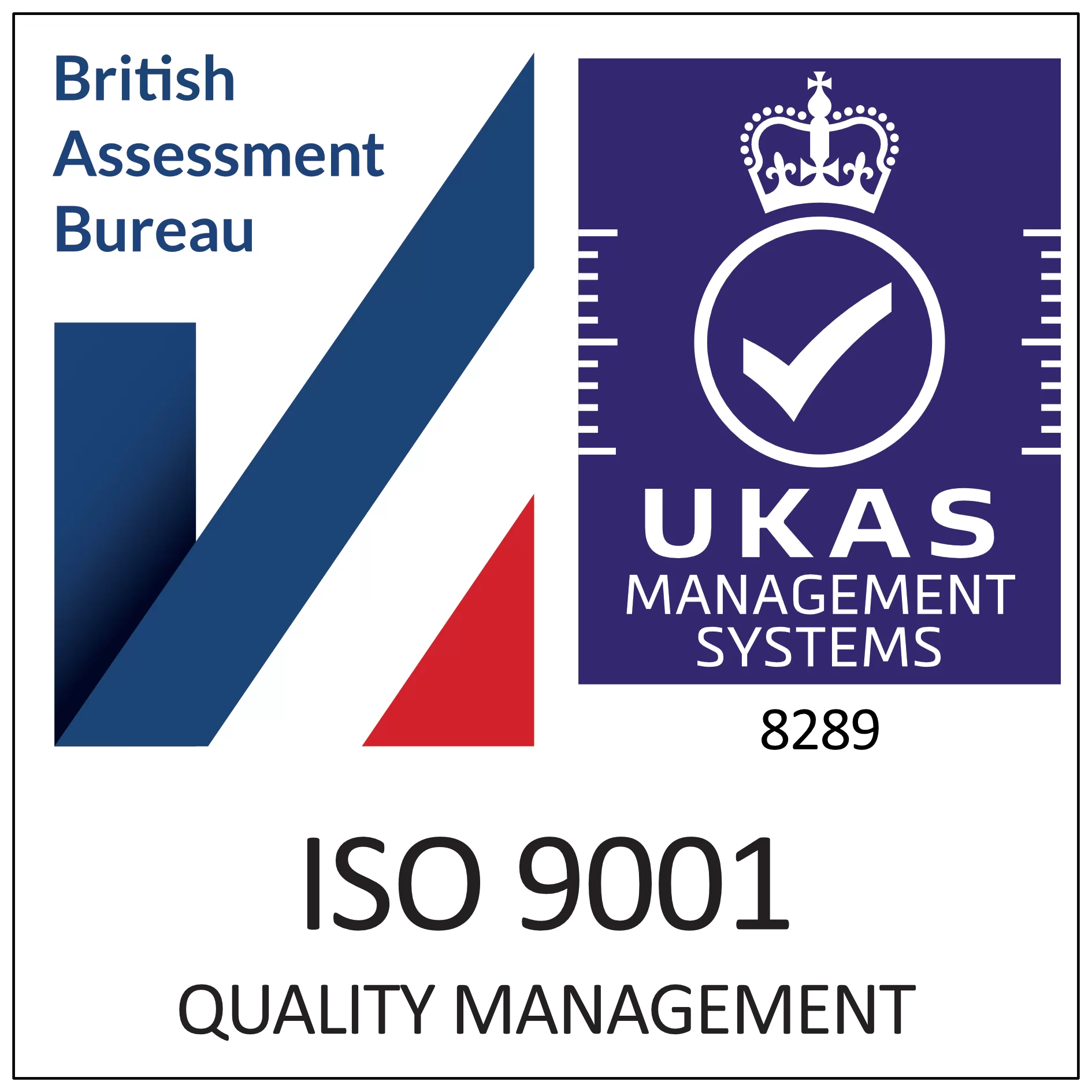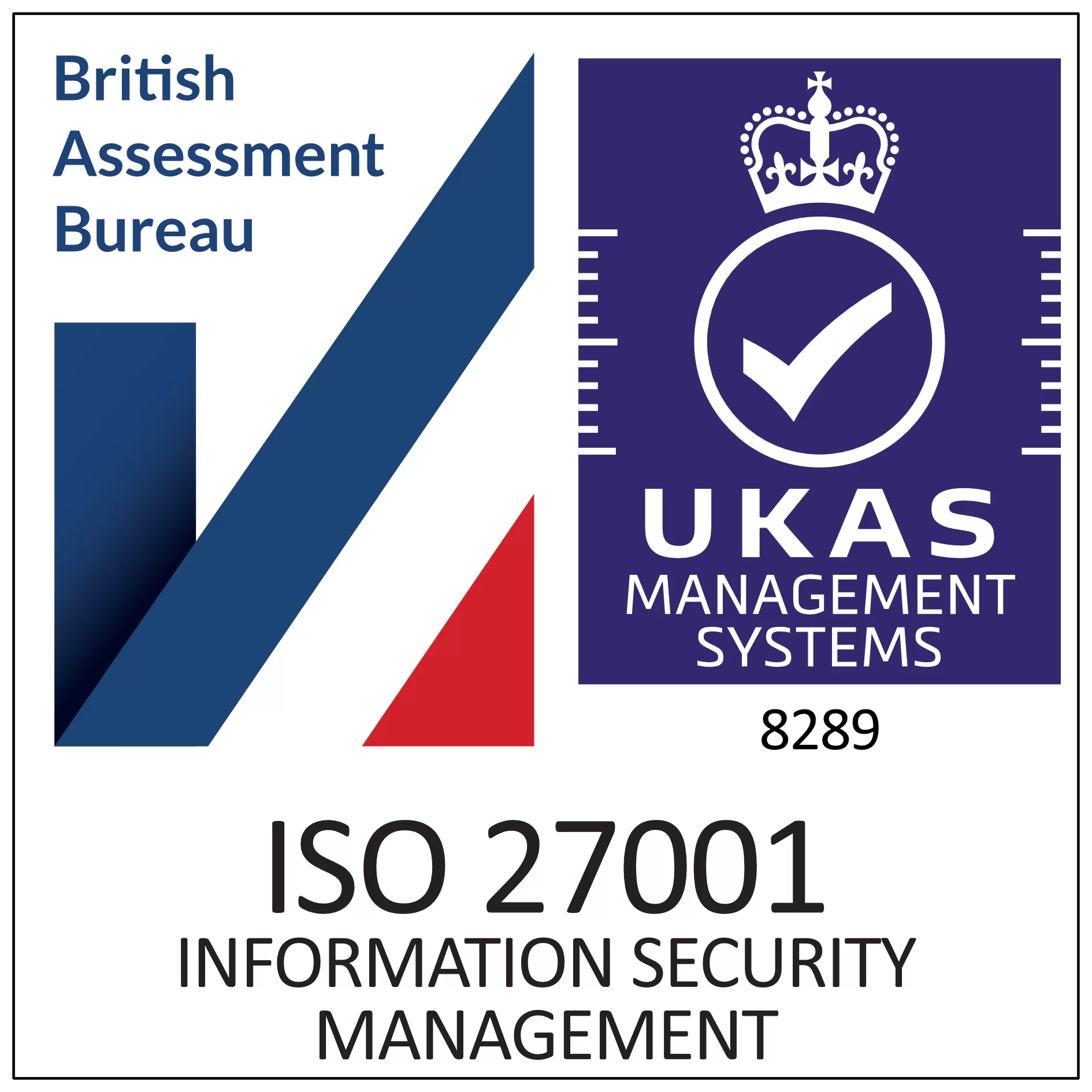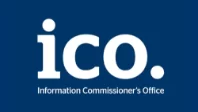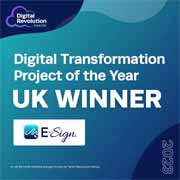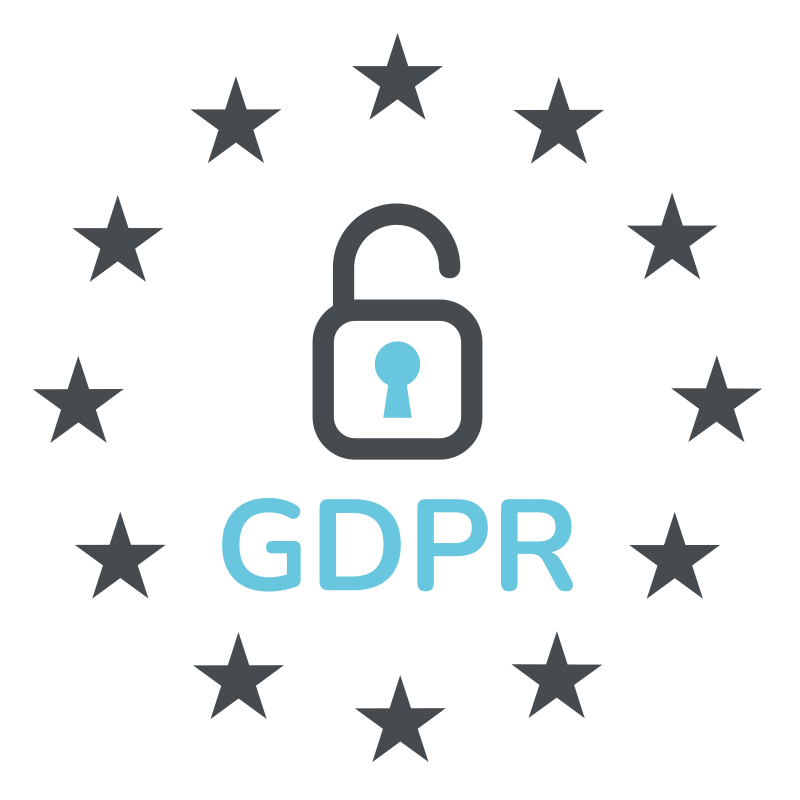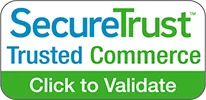Home | News & Insights |
The Future of eSignatures – 2025
Luke Garrett
Head of Digital Transformation
PUBLISHED
20th January, 2025
Modern businesses continually strive to make their processes more efficient to save time and money, ensuring they are as profitable as possible. Electronic signatures have become an invaluable tool with more and more organisations implementing an online signature solution into their workflows and maximising the benefits of the technology.
It’s clear to see that the e-signature market is showing no signs of slowing down with an expected growth from $9.9 billion in 2024 to 70.24 billion by 2030. So, what does the future hold for electronic signatures as we move into 2025? Let’s find out in this guide…
Current areas of uncertainty
Despite the significant growth in the e-signature market in recent years, there have been some challenges and areas of uncertainty that are important to highlight. For example, one common questions is the legality and validity of electronic signatures. When considering the future of e-signatures, the following terms should be taken into account:
- The current technology available for confirming identities and executing e-signatures
- Best practice guidelines for using e-signatures
- Preventing fraud when using e-signatures
Whilst there are some areas that require legal reform, one of the biggest barriers to the implementation of e-signatures has been the lack of certainty and confidence from professionals. In some cases, this comes from a lack of trust whilst in others it is simply that users aren’t aware that this technology is available to support them with their document needs, and that is already legal.
Therefore, in the future, educating potential users will be essential, utilising use cases and helping them to feel comfortable with the technology, overcoming scepticism and increasing confidence. The use of e-signatures should be encouraged when executing documents to increase efficiency, following best practices when doing so.
Also, a report from the Industry Working Group on Electronic Execution of Documents revealed that the Government being an “early adopter” of e-signatures could be beneficial in encouraging a wider implementation of the technology within society. We are already seeing the effect of this as the HM Land Registry recently announced it would accept electronic signatures are some document types relating to property transactions.
How is the landscape evolving?
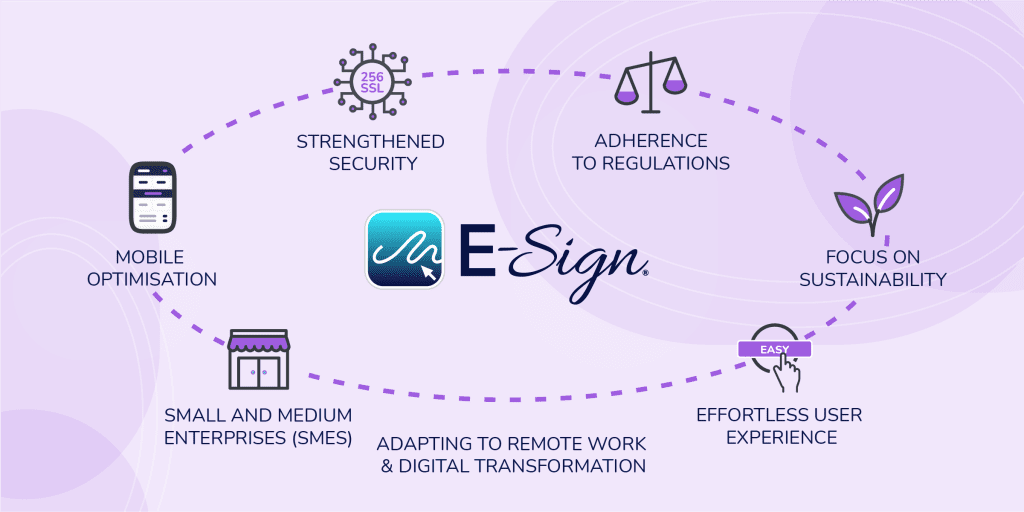
The e-signature landscape is rapidly evolving, largely driven by increasing regulatory requirements, heightened security concerns, and the demand for more seamless digital experiences. In 2025, there are several trends anticipated relating to online signatures and their role within business workflows.
- Effortless user experience – Consumer expectations are evolving, pushing businesses to deliver smoother and more efficient customer interactions. eSignature solutions must prioritise user-friendly interfaces and streamlined workflows to reduce friction and align with these rising standards.
- Strengthened security – As cyber threats grow increasingly advanced, robust security is a non-negotiable requirement for e-signatures. Leveraging cutting-edge encryption and stringent authentication methods, digital signature platforms can safeguard sensitive information with confidence.
- Adherence to regulations – With technology continuously advancing, regulatory landscapes are also adapting. Staying compliant with frameworks like eIDAS and GDPR is essential. eSignature tools must be developed to meet and exceed these regulatory demands to ensure legal and operational reliability.
- Adapting to remote work and digital transformation – The expansion of hybrid and remote work environments has amplified the need for secure digital tools. eSignatures are pivotal in enabling remote operations and driving digital transformation efforts, supporting businesses in navigating this evolving work dynamic.
- Focus on sustainability – Companies will continue to promote eSignatures as part of their sustainability initiatives, reducing reliance on paper and physical logistics.
- Small and medium enterprises (SMEs) – SMEs are likely to adopt eSignatures more widely as tools become more affordable and user-friendly.
- Mobile optimisation – With mobile devices driving digital interactions, eSignature solutions will focus on optimising the signing process for smartphones and tablets.
Future changes to eSignature law
As of the time of writing this article, there are some circumstances in which a digital signature cannot be used as it cannot be suitably verified due to statutory requirements. One example of this is acquiring lasting Power of Attorney (the transfer of legal autonomy from one individual to another). Also, in other cases when an e-signature can be used, a physical witness may still be required, negating the benefits of signing documents online.
Therefore, one future prediction for e-signatures is an uplift in the use of Qualified Electronic signatures (QeS) for regulated businesses handling high-value documents. This type of signature is the only form of digital signature that is legally equivalent to a handwritten signature and adheres to the maximum security and identity verification standards outlined in the eIDAS regulation.
Additionally, as mentioned earlier, there are several initiatives in Government and industry trying to fully adopt e-signatures and simplify digital document execution. The HM Land Registry project has been a promising example of this with workflows operating more efficiently through electronic property contracts.
HMLR is also currently running a pilot to evaluate QeS as a secure signing solution in the conveyancing process. If this pilot is successful, we could see significant reforms in how electronic signatures are used in the public sector, with them becoming more integrated into our daily lives. There may even be further reforms so that physical witnessing is not required for any type of document. Future use cases for QeS in this way might include wills, court documents, cancelling utility services, and more.
Reassurance around fraud protection
The future of electronic signatures depends on a continued increase in adoption into business processes. Technology in this area has advanced to a stage where, in most cases, e-signatures are now safer than handwritten signatures. With leading digital signature platforms like E-Sign having built-in security features such as an audit trail, document authentication and signer verification.
By providing this higher level of assurance in verification as well as utilising encryption and other advanced fraud protection systems. eSignature providers can offer complete assurance to users that their document data is kept as secure as possible with minimised risk of fraud or unauthorised access. Increasing consumer trust and confidence is essential through gaining a better understanding of the technology and why it is more secure than traditional handwritten signature methods on physical documents.
Integration with emerging technologies
Electronic signatures are not the only technology that has seen a significant increase in implementation over the past few years. Other tools such as AI (Artificial Intelligence), blockchain, and biometric authentication have become increasingly important in the modern business world to enhance operational efficiency and security. Below are some of the ways e-signatures can be used with these technologies to further strengthen processes and establish a foundation for an effective digital ecosystem.
- Artificial intelligence – AI could streamline the signing process, offering intelligent document verification, optimised fraud detection, and automated workflows. This saves time and resources and reduces the risk of human error.
- Blockchain – blockchain technology might provide enhanced security and transparency for e-signatures, creating tamper-proof records and a decentralised validation process.
- Biometrics – integrating biometric data such as facial recognition and fingerprint scanning in the future will help to enhance the security and reliability of online signatures.
Cloud-based and SaaS solutions
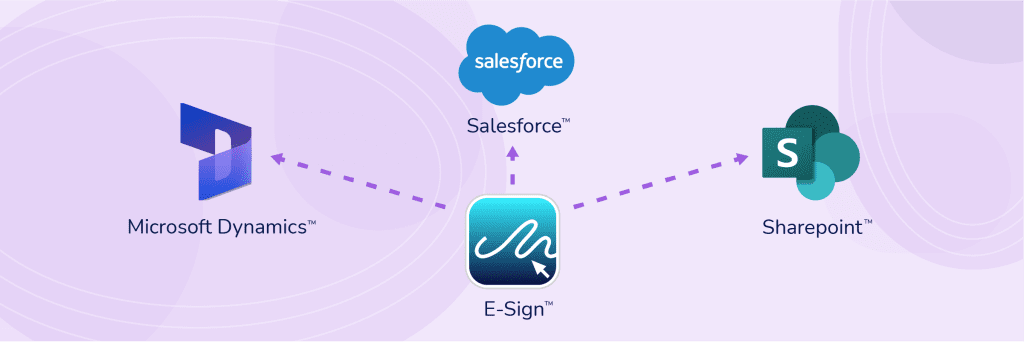
As we move into 2025, cloud-based e-signature platforms will likely be a dominant force in the market, helping businesses to scale their operations globally, without any infrastructure constraints. In addition, platforms like E-Sign can integrate seamlessly with productivity tools and enterprise software (e.g., CRM systems) including Microsoft SharePoint, Salesforce, Dynamics 365, and more to provide simplified document workflows.
This will make processes simpler as users will no longer need to switch between applications to complete tasks. They can take advantage of a more intuitive solution. These types of e-signature platforms can help to provide a better user experience, such as low code/no code customisation. So, businesses will have more control over customising eSignature workflows without needing extensive technical expertise.
Start your digital transformation with E-Sign
In 2025 and beyond, eSignatures are set to become a cornerstone of digital transformation, enabling faster, more secure, and environmentally sustainable business operations worldwide. eSignatures are no longer a convenience—they are a necessity for businesses and individuals navigating an increasingly digital-first world.
Whether you’re a small business owner, a corporate leader, or an individual managing personal transactions, adopting eSignatures is a step toward greater efficiency and innovation. Start signing smarter, faster, and greener today with E-Sign.
Contact us to discuss your requirements and our digital transformation will be able to provide you with a tailored solution that meets your business needs. You can also get started with E-Sign by registering for our 14-day free trial. This will allow you to explore the features and functionality of the platform and see how it can work for you.
 Facebook
Facebook
 X (Twitter)
X (Twitter)
 LinkedIn
LinkedIn


